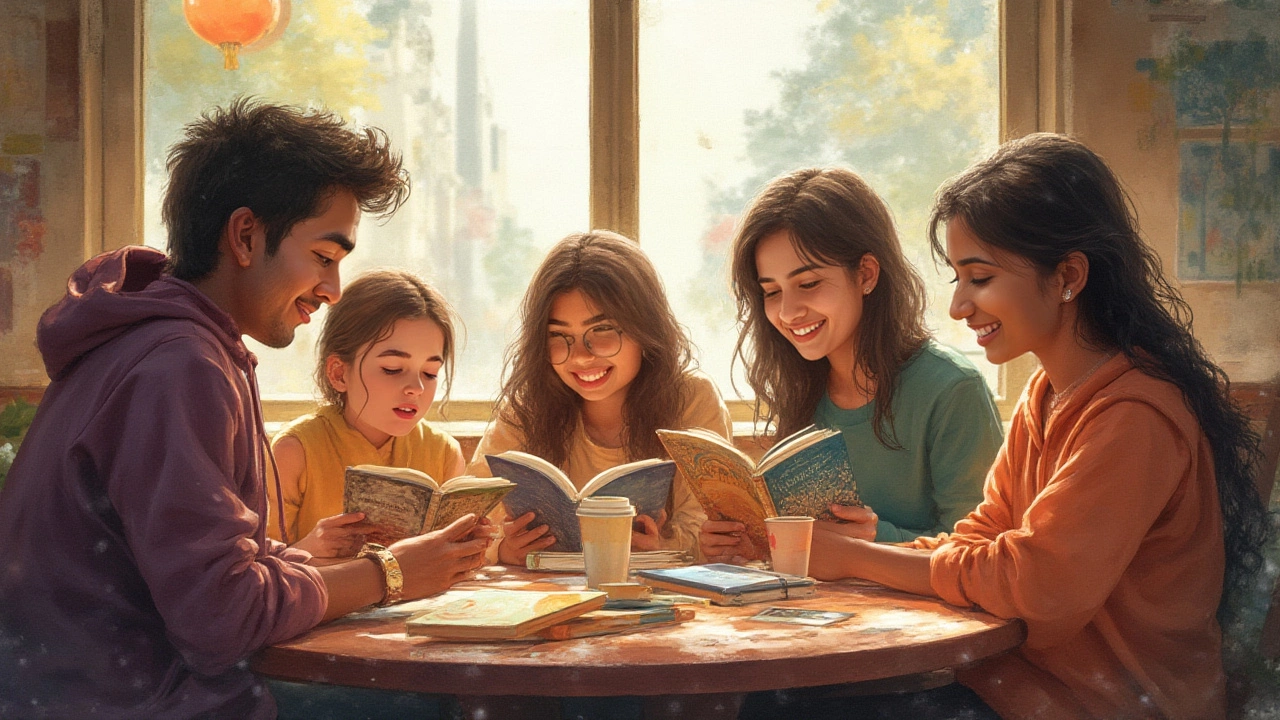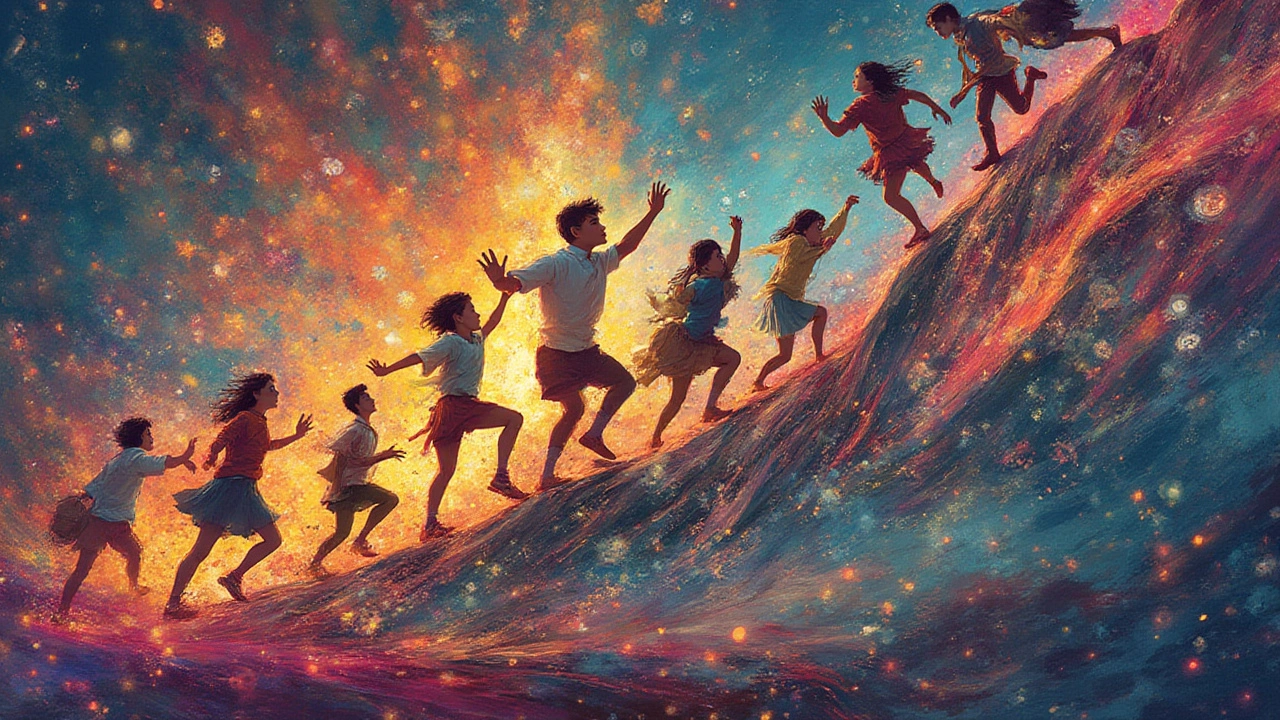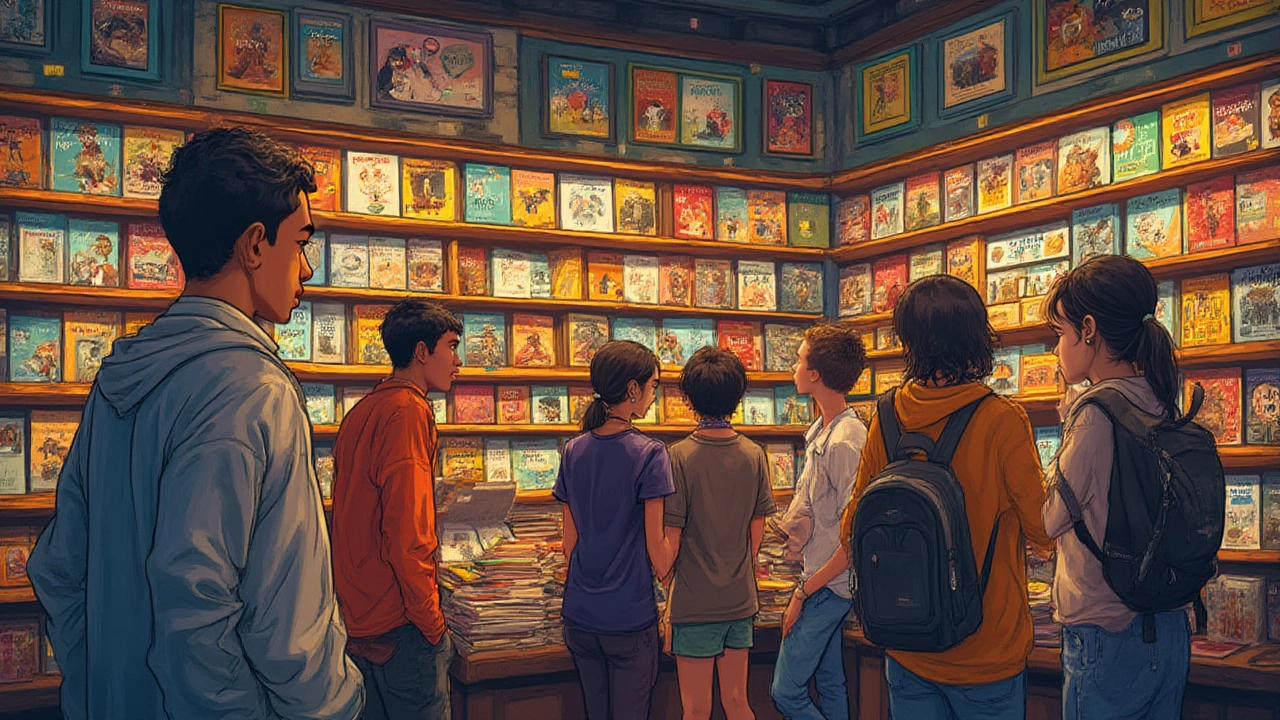Teenagers camped out overnight for a midnight book release. Instagram blew up with fan art and memes about the latest YA trilogy. BookTok reviews sent a little-known author straight to the top of the charts. It sounds like something from 2012 during the bread-and-butter days of The Hunger Games craze, right? Actually, it's happening right now, in 2025. The buzz around young adult fiction keeps getting louder, not quieter—and it's not only because of nostalgia or marketing hype. Real teens and plenty of adults still flock to these books, and there’s more to the story than meets the eye.
The Numbers Don't Lie: How Big Is YA Right Now?
It’s easy to think that young adult fiction peaked with Harry Potter or the Divergent years. But sales charts say otherwise. According to the American Booksellers Association, YA sales in 2024 grew by 7% over the previous year, reaching new records. Meanwhile, global sales are catching up too: UK-based Nielsen BookScan reported a 9% increase in YA sales, with Asia and South America seeing the biggest jumps. Yes, some of that is driven by mega-hits like the "Song of the Last Ember" series (which you probably see everywhere on social media), but it’s also about depth. Midlist and indie authors are hitting bestseller lists for the first time, carving out space in the new YA landscape.
If you’ve been to a bookstore lately, you’ll find that YA takes up more shelf space than almost any other fiction category, sometimes even rivaling adult science fiction and fantasy sections. Libraries are reporting higher checkouts of YA books as well, especially among readers aged 12–24—but here’s the twist. Almost forty percent of current YA book buyers are adults over 25, according to a 2024 Pew Research study. They’re drawn to fast-paced plots, quick-witted dialogue, and the intense emotions that YA stories deliver. The genre keeps spreading across digital and physical spaces, making it way more than just a fleeting trend.
What Makes YA Fiction So Sticky?
If you ask fans why they love YA, you won’t get just one answer. Some crave the realness—the way authors dig into anxiety, first love, heartbreak, or social justice without sugar-coating anything. Others live for the fantasy worlds, the sharp plot twists, or characters they can’t get out of their heads. The truth is, YA books have a knack for balancing tough issues with just the right dose of hope. Even the darkest stories find some spark worth fighting for. That’s why some of the most talked-about books of the past year, like "A Whisper in the Wasteland" or "The Unspoken Code," tackle mental health, queer identity, climate change, and friendship breakdowns—without talking down to readers.
Social media gives these books another layer of power. BookTok’s rise is impossible to ignore. Almost every publisher now has a dedicated TikTok campaign, and young authors are building careers by going viral with a single thirty-second clip. A good review or clever fan theory can catapult a book onto Amazon’s top ten in days. YA novels come packed with viral potential: simple covers, relatable quotes, memes, and dramatic twists all lend themselves to the format. If you’re not following #YABookTok, you’re missing the front seat to how culture shifts around teen fiction now.
One more thing that keeps readers coming back is the genre’s wild flexibility. YA isn’t just dystopian or romance anymore. Recent years saw a boom in YA horror, murder mysteries, slow-burn sapphic love stories, and books told through podcasts, online texts, or even video game scripts. Some publishers now look for “crossover” books—YA novels that appeal just as much to older adults as to high schoolers. The ability to experiment, break rules, and mix genres keeps the books fresh week after week.

Bestsellers, BookTok, and Streaming: Who Are the Power Players?
Bestseller lists look a lot different compared to ten years ago. Newcomers like June Redding or Zaidan Cooper have soared to the top with series that blend science fiction and romance, while familiar names—Sabaa Tahir, V.E. Schwab, Angie Thomas—are still dominating awards and sales. Media tie-ins have become a major force, too. Ever since streaming giants realized that YA books could be their next “Stranger Things” or “Wednesday,” adaptations have exploded. Shows based on "The Quarry Files," "Lunar Variations," and "Storm & Root" have drawn in fresh waves of fans who might never have read the books otherwise. The Netflix adaptation of "Lagoon Lights" even tripled the book’s sales in one month after its release in early 2025.
A survey by YPulse in February 2025 found that one in three teens discovers new books via short video content on TikTok or YouTube Shorts. Reviews, “aesthetic boards,” dramatic readings, and hilarious recaps create buzz that publishers can’t buy in ads. Even more fascinating: fan-driven content sometimes shapes what authors write next. Kasia Mendoza, author of "The Sable Road," says she watches BookTok reactions and sometimes tweaks early drafts to amp up the drama or humor that fans crave. Interactive media and forum-based storytelling are also making YA more collective and less top-down than ever before.
If you want to find the next big hit before it breaks out, keep an eye on indie presses and web-first publications. Wattpad still serves as a launchpad for future blockbusters, with "Glass Chasm" and "DJ Undercover" both jumping from online serial to hardcover deals in just months. Publishers now value a passionate digital fanbase just as much as literary prize potential.
Genres on the Rise: What's Hot in YA in 2025?
If you still think YA equals vampires and love triangles, it’s time to catch up. The biggest genres this year have totally shifted. Sci-fi thrillers with AI ethics and climate disaster themes are everywhere. Horror-comedy mashups, like "The Haunting of Ivy Park," fly off shelves. Contemporary queer romance has become a backbone of the YA market—Seda Rami's "Finding Blue in the Meantime" just hit its 41st reprint as it crisscrosses the globe. Stories set in small towns, with tight friend groups, are back thanks to Gen Z and Gen Alpha’s craving for authenticity and found family tropes.
Non-traditional storytelling formats are popping up all over. Some books use chat logs and text messages as chapters. Others combine comics, digital art, or even music playlists woven into the story. These new formats appeal to digital natives who like their reading experience fast, multi-sensory, and a little experimental. Publishers have noticed: over a quarter of YA releases in 2024-2025 came with a companion app, interactive ebook, or “read along” video series. Want a tip for picking up the next big YA book? Look for bold covers, experimental story structures, and anything that deals with social anxiety, identity, or radical activism.
It helps that YA publishing itself is more diverse than ever. Over sixty percent of the top-selling YA authors in 2024-2025 identify as women, and over a third identify as people of color or LGBTQ+. This isn’t just a marketing angle—it’s changing what kinds of stories get told and who sees themselves on the page. Books like "Red Thread, Golden Hour" and "Loopstop" don’t just walk the walk; they’re expanding what YA even means.

Is YA Here To Stay? Why the Boom Keeps Going
Sure, trends in fiction come and go. But YA has a secret weapon: community. From high school book clubs to online fandoms, from giant conventions like YALLFest to tiny regional meetups, the genre brings people together who might not meet otherwise. Readers swap fan art, trading cards, and even home-brewed playlists inspired by their favorite books. Authors like to share their own reading habits, writing struggles, and TikTok mishaps in real time, breaking down the old walls between creators and fans. This back-and-forth energy keeps YA evolving every single year.
Don’t underestimate libraries, either. School and public librarians consistently fight for diverse, relevant YA books. And even with rising book bans in some U.S. states, efforts to connect underrepresented teens with stories about their own lives are only getting stronger. School reading programs highlight voices from across the gender, racial, and LGBTQ+ spectrum. For a lot of kids (and adults), this is the only place they see themselves reflected anywhere.
If you want to get into YA but don’t know where to start, try these three tricks: pay attention to BookTok’s trending list, ask a librarian for their five favorites, or read a book that’s landed Netflix rights but hasn’t started filming yet. Bonus points if you join an online reading group—there’s bound to be someone with a recommendation you wouldn’t have found otherwise.
Of course, not every book is a masterpiece. YA’s rapid growth means a lot of copycats and rushed series. But the best stories out there pack more depth into two hundred pages than some adult fiction manages in six hundred. Mix relatable characters, sharp twists, and discussions about the real issues teens face (and adults remember)—that’s the secret sauce. So if you thought *young adult fiction* faded out, take another look. It’s thriving, changing, and full of surprises, whether you’re reading your first YA novel or your hundredth.

